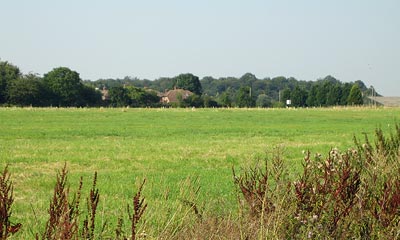Alarm over green belt
The extent of green belt land being lost to developers is revealed today.
Two London boroughs, Hillingdon and Sutton, alone have lost 290 hectares in the past six years - equivalent to more than 900 football pitches. Nationally, the Government claims there is more green belt land than ever before, following the creation of 25,000 hectares, with a further 12,000 hectares soon to be designated.
But environmentalists are alarmed at the loss of open land at a time when levels of house-building in the capital is barely half of the 33,000 homes a year envisaged by Mayor Ken Livingstone. Nigel Kersey, London director of the Council for the Protection of Rural England, said: "If land is being lost from the inside edge of the green belt it's being eroded. That means it is not delivering its purpose, which was to ring large cities like London with open spaces that would stop the relentless urban expansion."

The state of the green belt emerges in a new Government analysis of different categories of Local Government Correspondent land between 1997 and 2003, as defined by local councils.
Other local authorities in the South-East to lose green belt land include Bracknell Forest in Berkshire, Sevenoaks in Kent, Three Rivers in Hertfordshire, and Tandridge and Mole Valley in Surrey.
Being designated as green belt means land can only be developed in exceptional circumstances. It also forces developers to concentrate on existing sites or former industrial "brownfield" land. This boosts the population of built-up areas and limits the expense of providing new infrastructure, such as public transport and strConections to the utilities.
In Hillingdon, one of the housing developments that has eaten into the countryside is at Manor Farm in Ickenham. Lying north of the A40 between Northolt Airport and Long Lane in Hillingdon, it stretches across almost 84 hectares.
In neighbouring Harrow, conservationists have highlighted 11 sites at risk. These include a former Ministry of Defence site in Brockley-Hill, where permission has been granted for 96 homes, and the BAE Systems site in Warren Lane, where 240 homes are planned. If the go-ahead is given, campaigners fear the destruction of the adjoining Stanmore Common, the only heathland in Middlesex.
Mr Kersey said there were around 10,000 acres of brownfield land in London, "which means it's not necessary to continue to erode the green belt. Developing brownfield sites is more expensive for developers. The soft option is to attack the green belt".
Mr Kersey said he believed the Mayor was serious about protecting the green belt despite having laid down ambitious housebuilding targets in his official blueprint, the London Plan. But he admitted this required the cooperation of the boroughs and Deputy Prime Minister John Prescott.
Mr Kersey said: "I'm prepared to accept that the Mayor is set against releasing or developing land in the green belt. The problem is that he doesn't have absolute power over what goes on."
ThisIsLondon.co.uk, 16.04.2004
